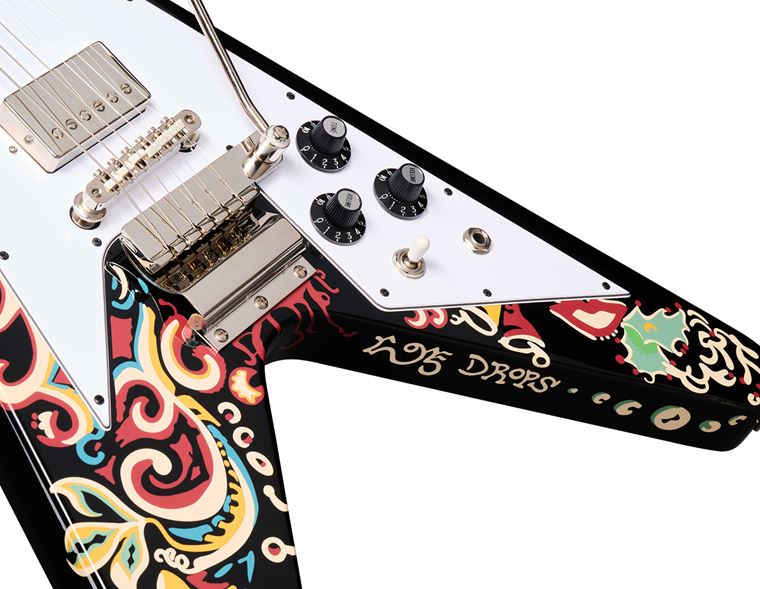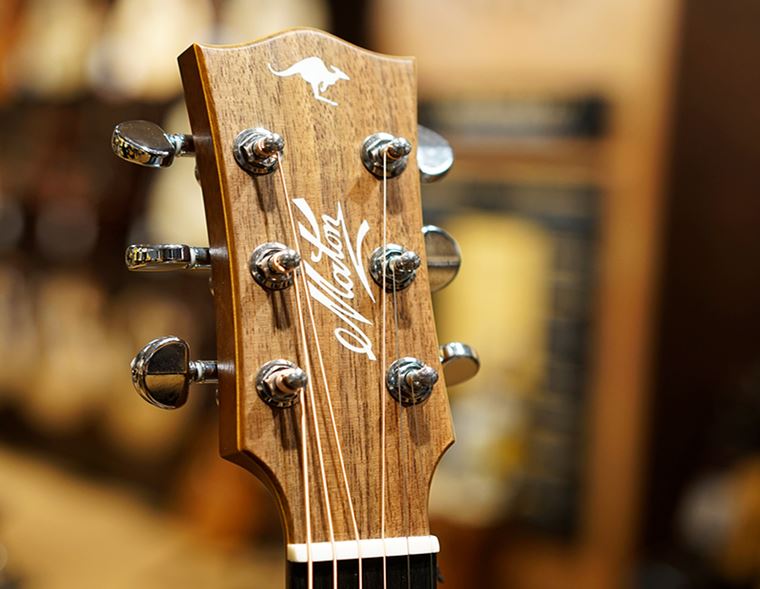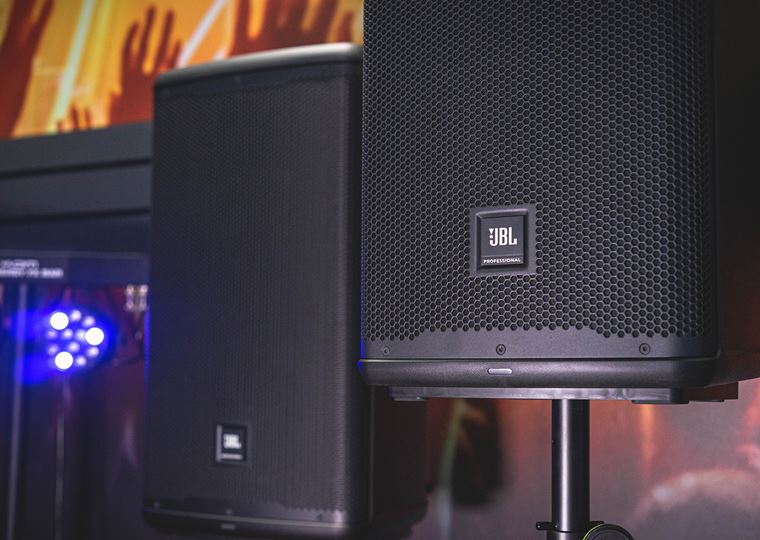Silverburst Guitars: The Story Behind the Finish
Published on 24 January 2024
Silverburst has been around a lot lately. From an obscure - and some would venture ‘faulty’ - colour of the mid 1970s, to the preponderance of Silverburst heavy rock axes, we’ve maybe never seen so much of the colour. So, what’s the deal? What is the background of Silverburst and does it actually, as Adam Jones would have us believe, actually make the guitar sound different?
I’m diving in. Won’t you join me?
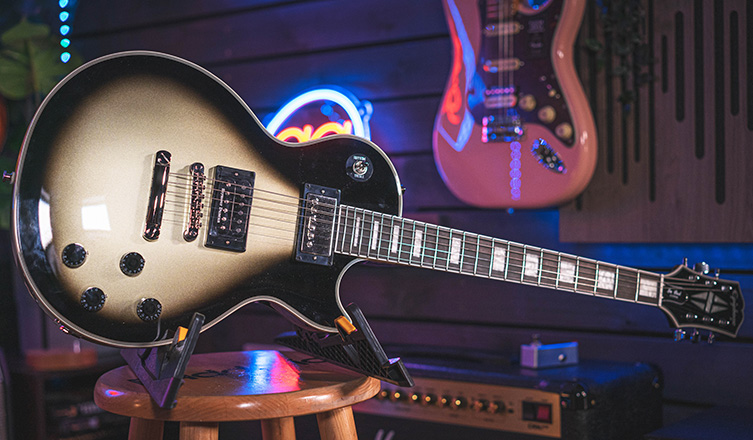
Contents
Back Then
Silverburst, as we recognise it today, seems to have originated with Gibson as a colour for the Les Paul Custom. In 1979, it was the 25th Anniversary of the model, and Gibson needed a special colour to celebrate.
The earliest use of the colour as far as I can tell - because there is no prior example to my knowledge - was August 1978, so Gibson obviously tried out the finish prior to their big anniversary! In terms of the 1979 guitars, Gibson reportedly only made between 150-200 Silverburst Customs before they were discontinued. Not a huge number by anyone’s standards, but as with all things scarce and guitar-based, the mystical legend began to build pretty soon after that. Not many were seen in public for pretty much all of the 80s, and perhaps the few that existed were thought of as curiosities more than anything else.
The 1990s, however, saw lots of Alternative Rock bands resurrecting old silverburst Les Paul Customs, bringing those unique looks to a whole new audience. Since then, the colour has been used more and more in the industry, as we’ll see.
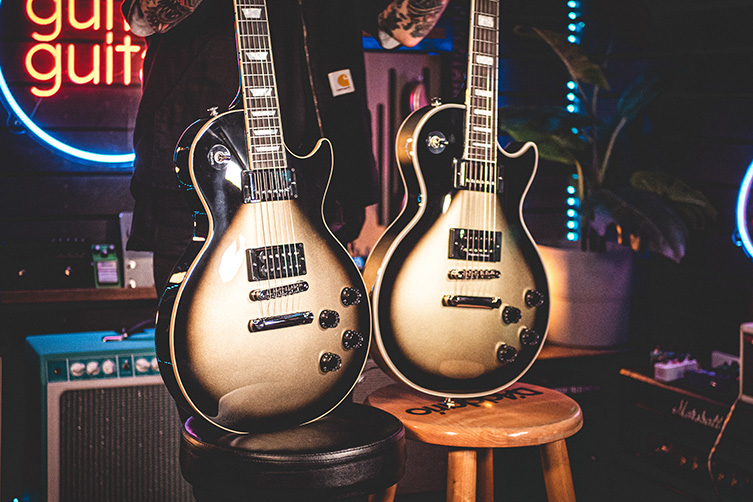
Turning Green
There are lots of opinions on what the silverburst paint adds to the guitar, and we’ll cover those in a little second, but before that, I’ll address one point that is sort of true.
Older Silverburst guitars often turn a strange shade of green, which has come to be seen as desirable amongst fans and collectors. Theories abound as to what causes such a change: is it the silver paint? Is it the flecks of metal within the silver paint?
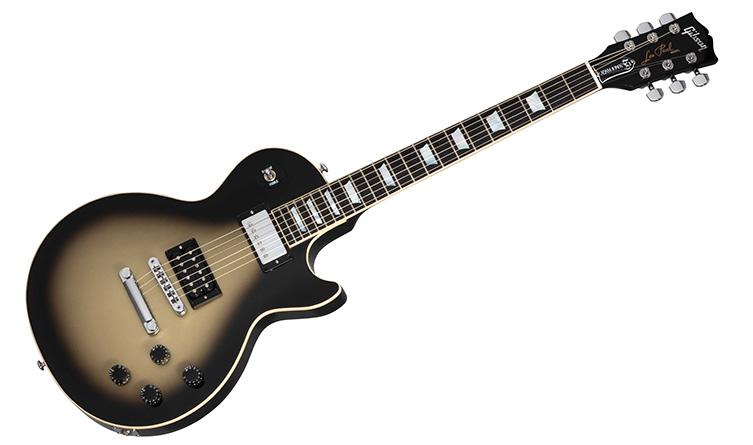
From the research I’ve conducted, it would seem that the answer is much simpler. Silverburst guitars turn green due to the nitrocellulose lacquer ageing, not the colours themselves.
Gibson certainly used regular silver paint from the Buick car catalogue (a very normal thing in the guitar world: many classic Fender colours are DuPont car paints), so there’s nothing particularly unusual about that. The black shade is presumably the same black they use on all of their guitars, so that’s not a factor either.
What we do know, though, is that nitrocellulose - the clear coat lacquer sprayed onto all Gibson guitars - does discolour when it gets old. Just look at any white Les Paul Custom from the 1970s and you’ll see a distinctly cream coloured guitar! This, then, is by far the most likely cause of that mysterious green tarnishing.
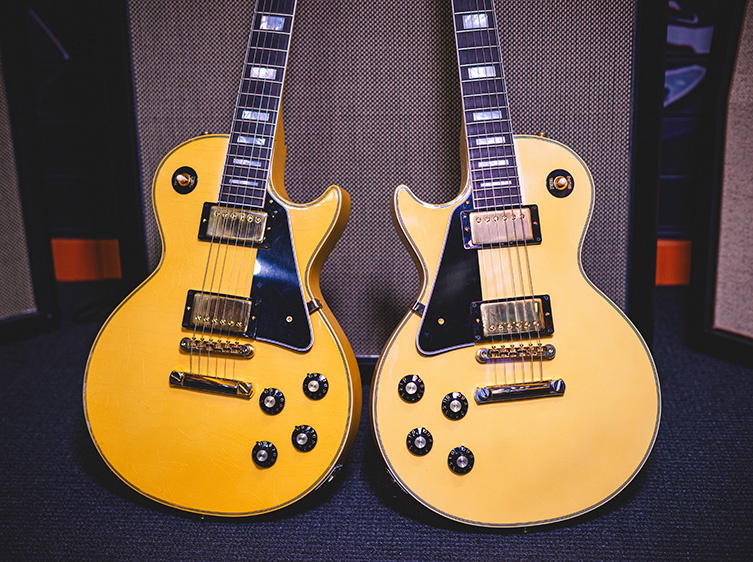
Adam Jones
Perhaps the most famous practitioner of the silverburst guitar is Tool’s Adam Jones. For his entire career, he has almost exclusively played a pair of 1979 silverburst Les Paul Customs, making them extremely visible to the band’s huge fanbase. Given the quality of his sound (which incorporates a multiple amp setup), I’d say he’s a pretty good advert for them!
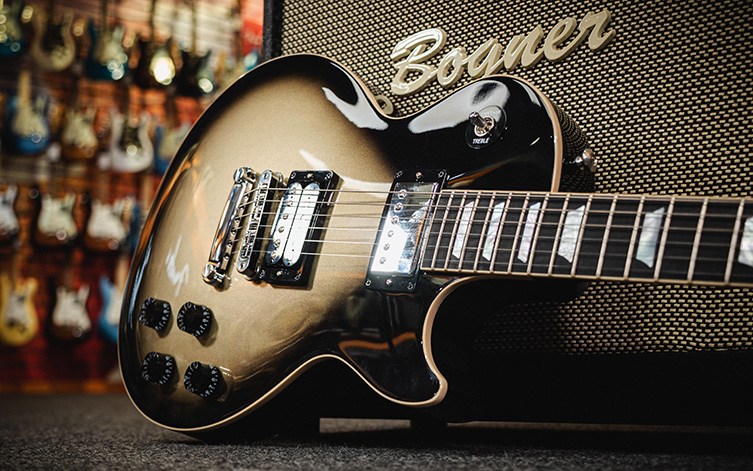
He’s a very secretive man, and often offers up bizarre or frankly silly responses when asked about the minutiae of his gear. For example, he reckons that the silverburst paint is physically heavier than other colours. There’s no basis for this at all, but I’d note that his era of Les Paul Customs actually used maple for their necks, instead of the (less weighty) mahogany, so maybe that’s the real factor? Certainly, most owners of silverburst Les Pauls from the late 70s do complain about the weight, so it may be that all 150-200 of them have maple necks and heavier pieces of mahogany.
On top of this, Jones contends that the paint actually plays a role in the guitar’s tone, as he stated to Guitar World magazine:
“I believe that particular metallic paint does something to the tone or the resonance or the polarity somehow”.
Is this likely? Well, who am I to say? What I can tell you is that the silverburst paint of the late seventies contained chromed aluminium, so there’s no real magnetic pull happening at least. Today’s silverburst paint uses chromed flecks or polyester, so it’s even less of a factor in that regard. There could be some element of reflection going on, but since I’m no physicist - and since Adam Jones gets a pretty spectacular sound - then I’m happy to say that there could be a tiny chance that the paint plays some part or other in the creation of tone. I’m pushing the boat out there, to be honest, because I don’t think it’s a huge difference, if anything. His once-secret bridge pickup (later confirmed to be a pretty normal Seymour Duncan Distortion humbucker) would play a greater part in the tone shaping, in my humble opinion!

As an aside to the subject of silverburst, Gibson recently released an Adam Jones signature Flying V (our stock sold out in about three seconds, sorry!) in a reverse silverburst! How cool is that for an idea? Can we see a Les Paul with this, please?
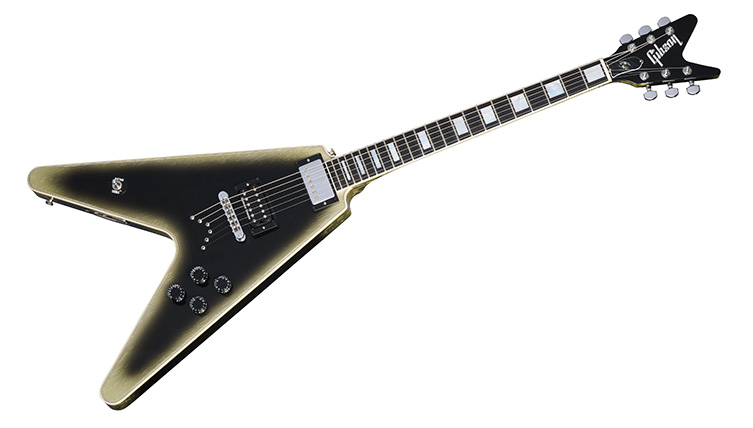
Modern Silverburst
For many guitar fans, SIlverburst will forever be the colour of certain Les Paul Customs. In reality, though, it’s actually been used on many other guitar models, and we’re not just talking about Gibson!
Mastodon’s Bill Kelliher (click through for our exclusive Bill Kelliher interview) is obviously a fan of the colour, because he’s been seen touring with Silverburst guitars for decades now. His newest ESP signature Royal Shiva guitar is silverburst, and previous models were close takes on the colour.
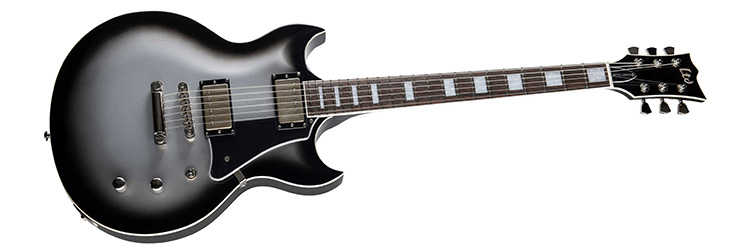
Yamaha worked with Mastodon a few years back on a hard-rock version of the famous SG guitar, and Silverburst was of course the natural choice for finish. There’s obviously a real resonance with silverburst and heavier rock and metal styles.
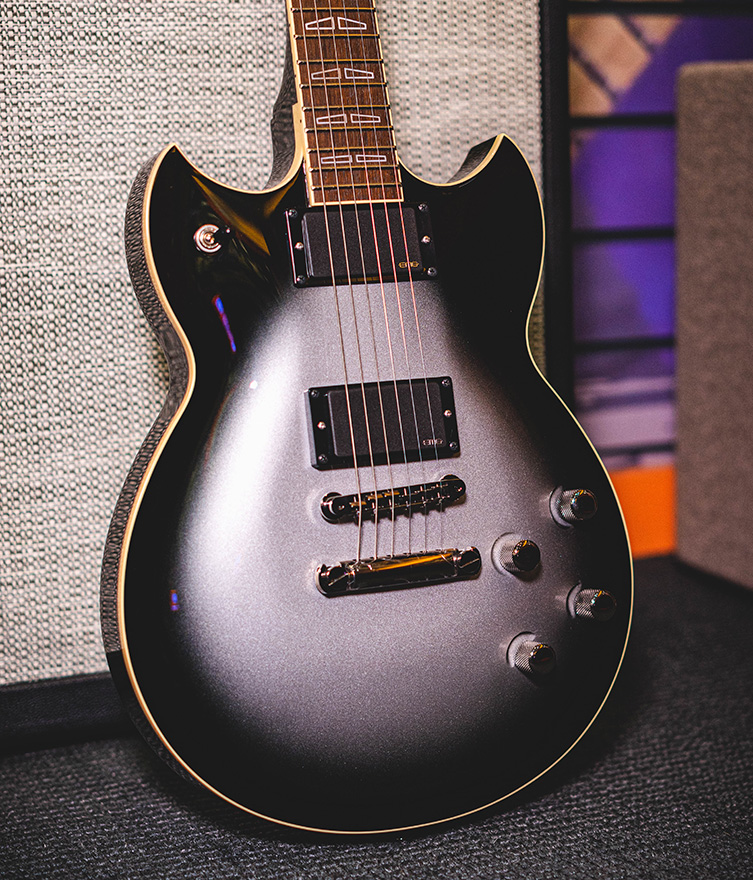
Fender have also gotten into the silverburst vibe, with certain Strats, Teles and basses being adorned with this famous shade. What do you think about Fender guitars in silverburst? Is it a good look?
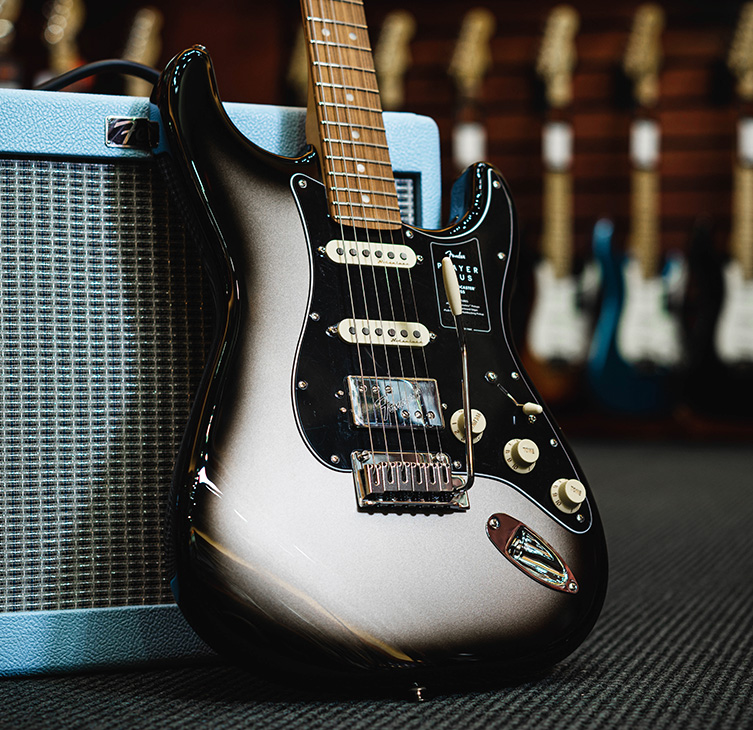
Does this finish suit the more Gibson-derived guitar designs better? If so, why is that, do you think? And why is it predominantly metal artists who gravitate to the colour? These are questions I cannot answer, but what I can definitely say is that it’s one of the coolest, most beautiful finishes out there!
Click to View our Selection of Silverburst Guitars




